For decades, Pratt Institute School of Art and Design alumnus and professor emeritus John Pai, BID ’62; MFA Fine Arts (Sculpture) ’64, has been creating intricately welded sculptures. Pai has lived a varied life, moving at a young age from war-torn Korea to America, where he fell in love with art and enrolled in Pratt. Going on to create a long career as an artist and educator, which has included leading Pratt’s sculpture program, Pai’s unique path to a life as an artist is reflected in his work. With the release of the new book John Pai: Liquid Steel, published by Rizzoli Electa in October 2023, readers are invited to take a look into the process by which Pai found his voice.
In the words of poet and critic John Yau, who wrote the introduction to the book (and who noted, years before its publication, the “strong need for a comprehensive monograph” of Pai’s work), Pai “is an improvisational sculptor, and close in spirit to a jazz musician . . . Pai has made inimitable forms that are simultaneously simple and elaborate, pared down and tightly raveled.”
Here is an inside look into the monograph, highlighted by Prattfolio in the magazine’s Spring 2024 New and Noteworthy section, with quotes of Pai’s excerpted from the book.
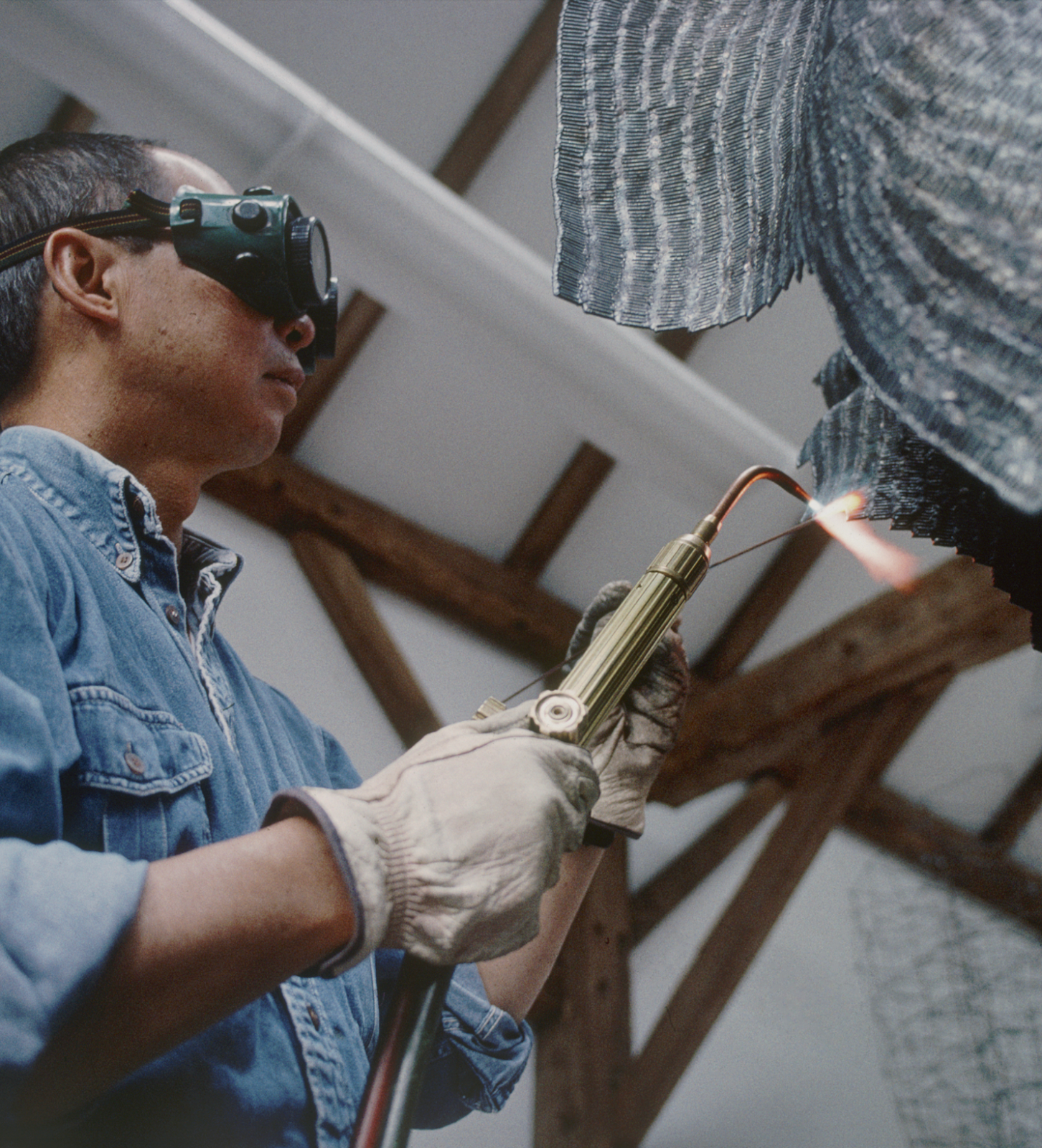
“Welding was a means by which I could construct concepts in the most minimal forms.”
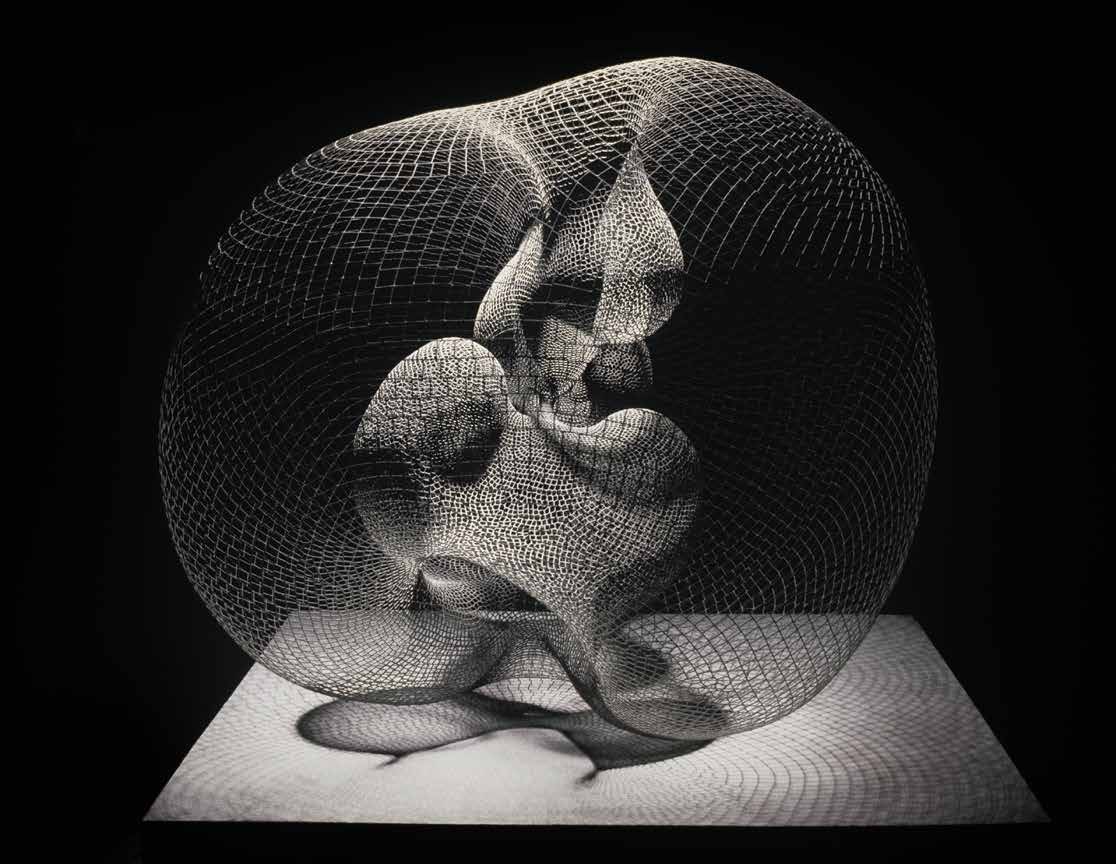
“Beginning with a point in space, welding tight formations of short steel rods, by eye, I often allowed the patterns to suggest directions. Sometimes they would lead to coherent forms and other times they would pull me into complex mazes from which I would have to extricate myself.”
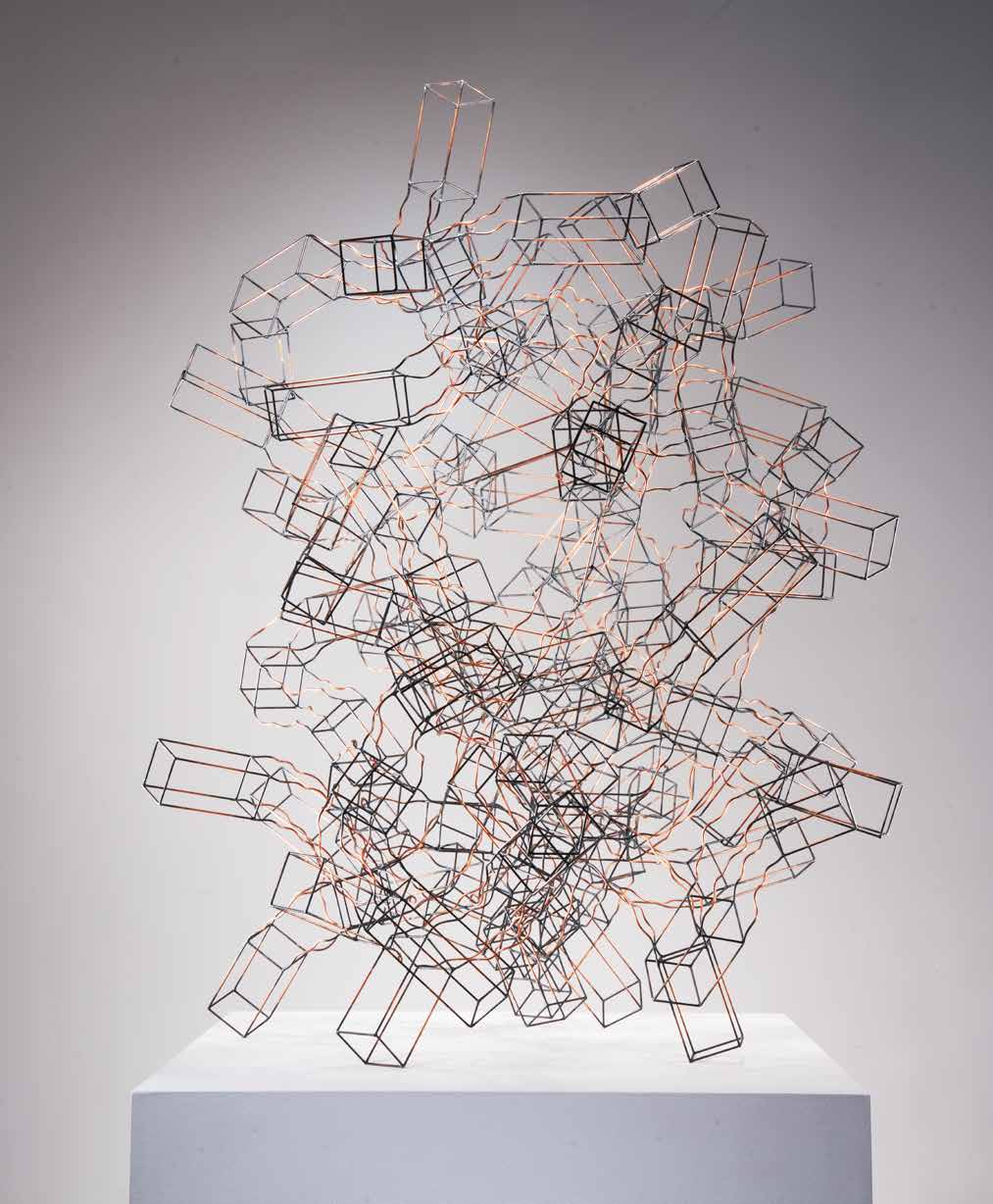
“The cube as a unit and a symbol of equilibrium (point zero) began to emerge. I began with a linear cube somewhere in space and welded continual cubes in all directions.”
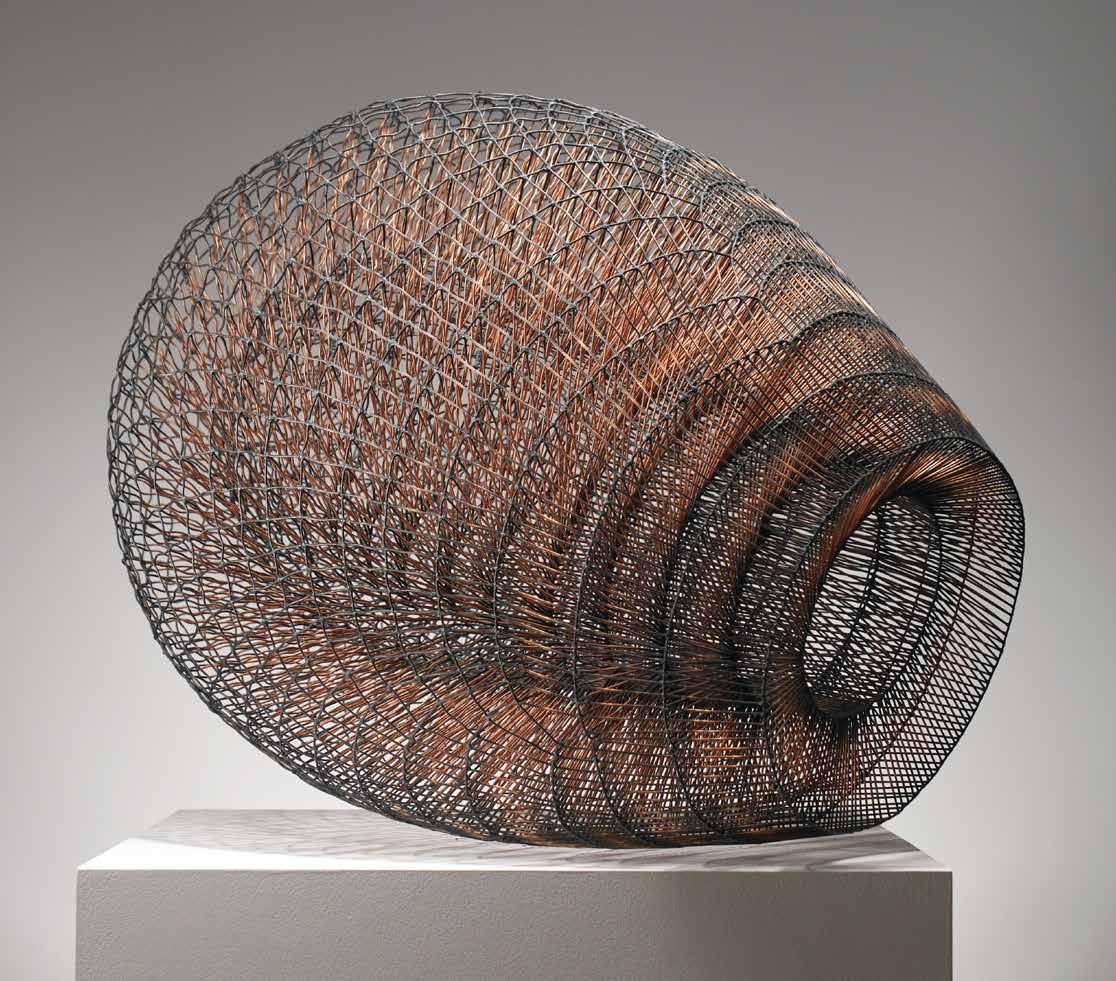
“If you look at the structure, there is an inner and an outer layer. They both depend on one another for their existence. Everything that happens in one layer is translated to the other.”
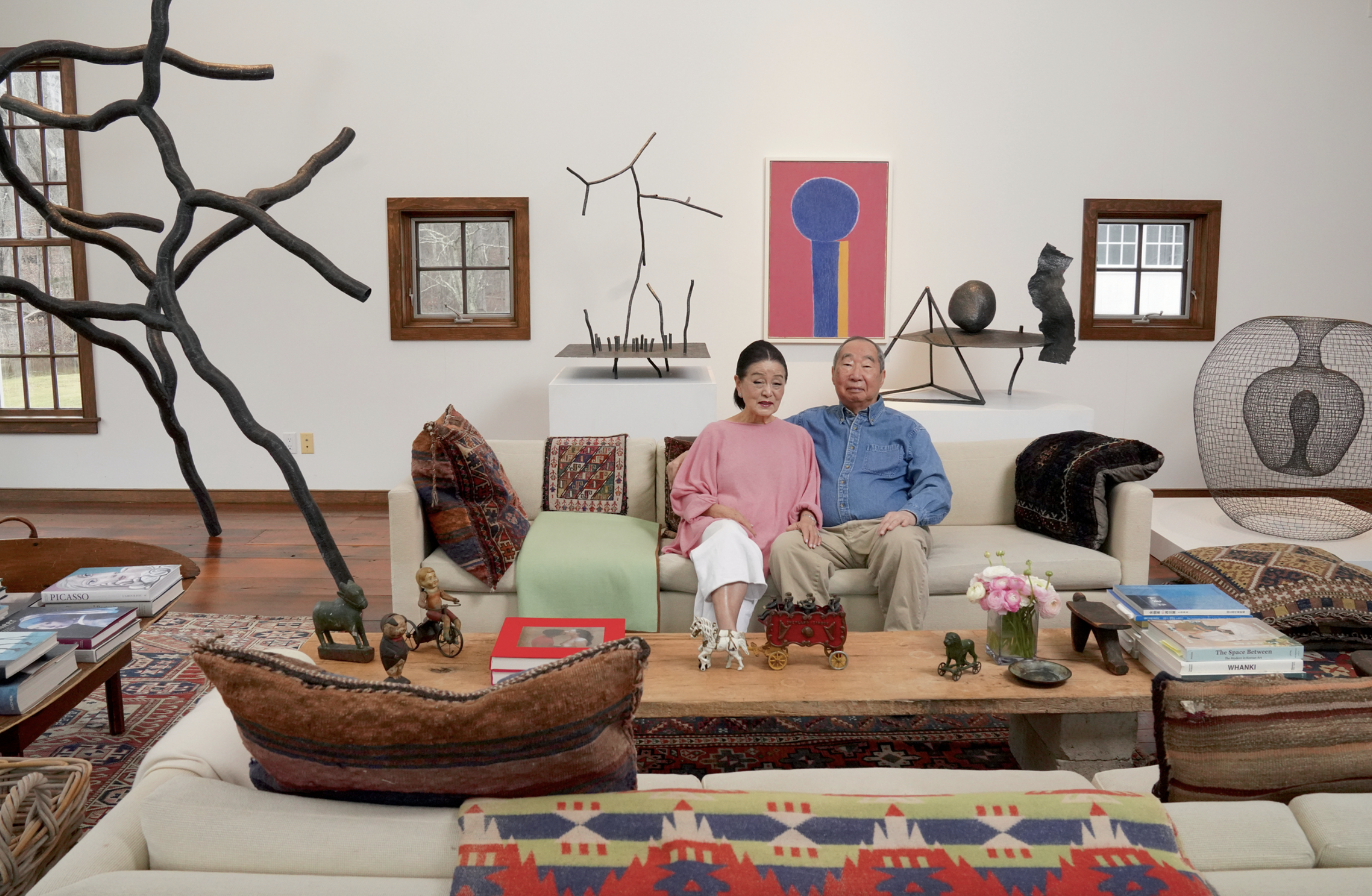
“At times, I look around my Connecticut home and wonder how reminiscent it is of my childhood home in Ilsan.”
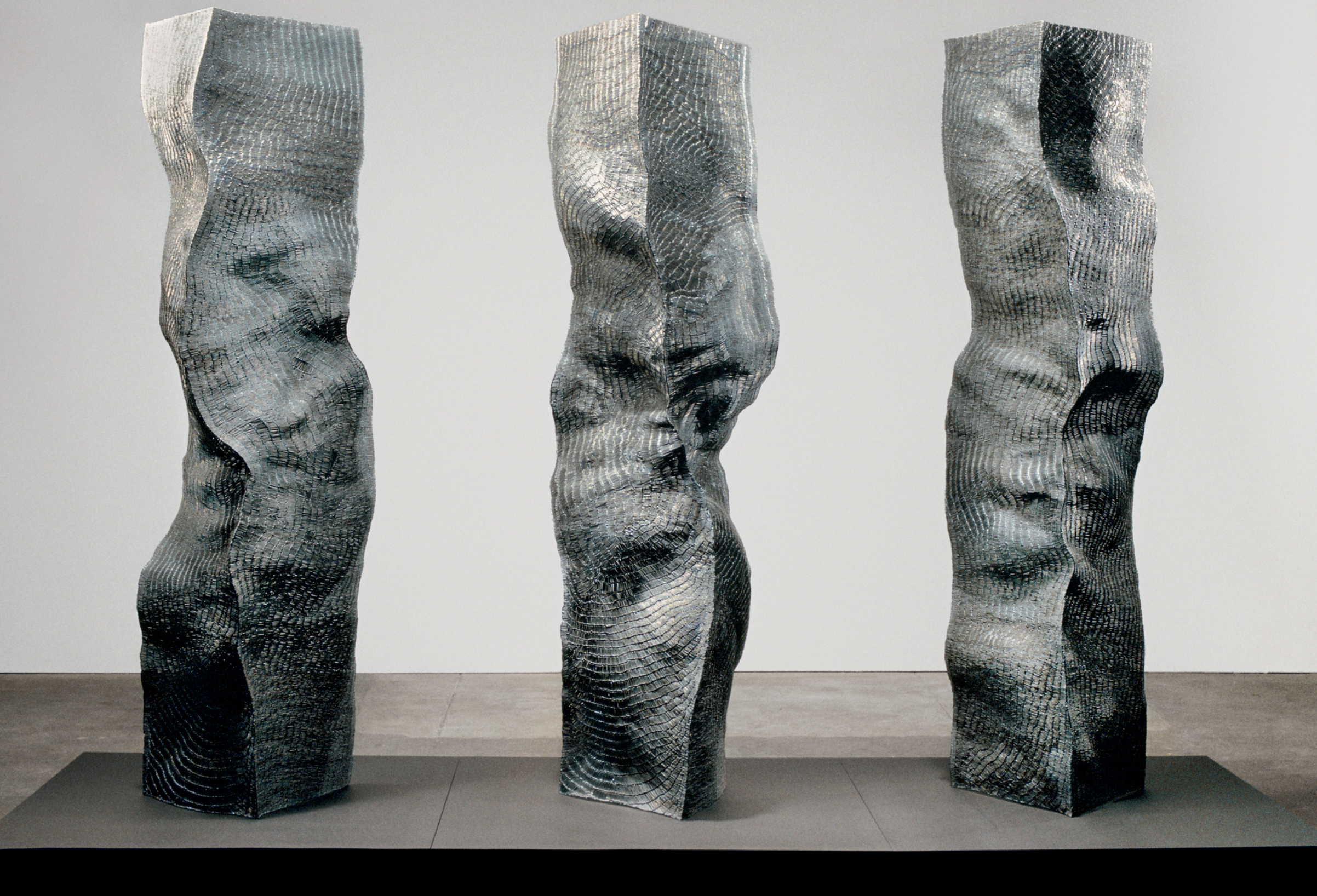
“In villages and at temples throughout Korea, there are wooden sculptures called jangseung. Villagers will often pray to these spiritual totems for blessings and protection.”
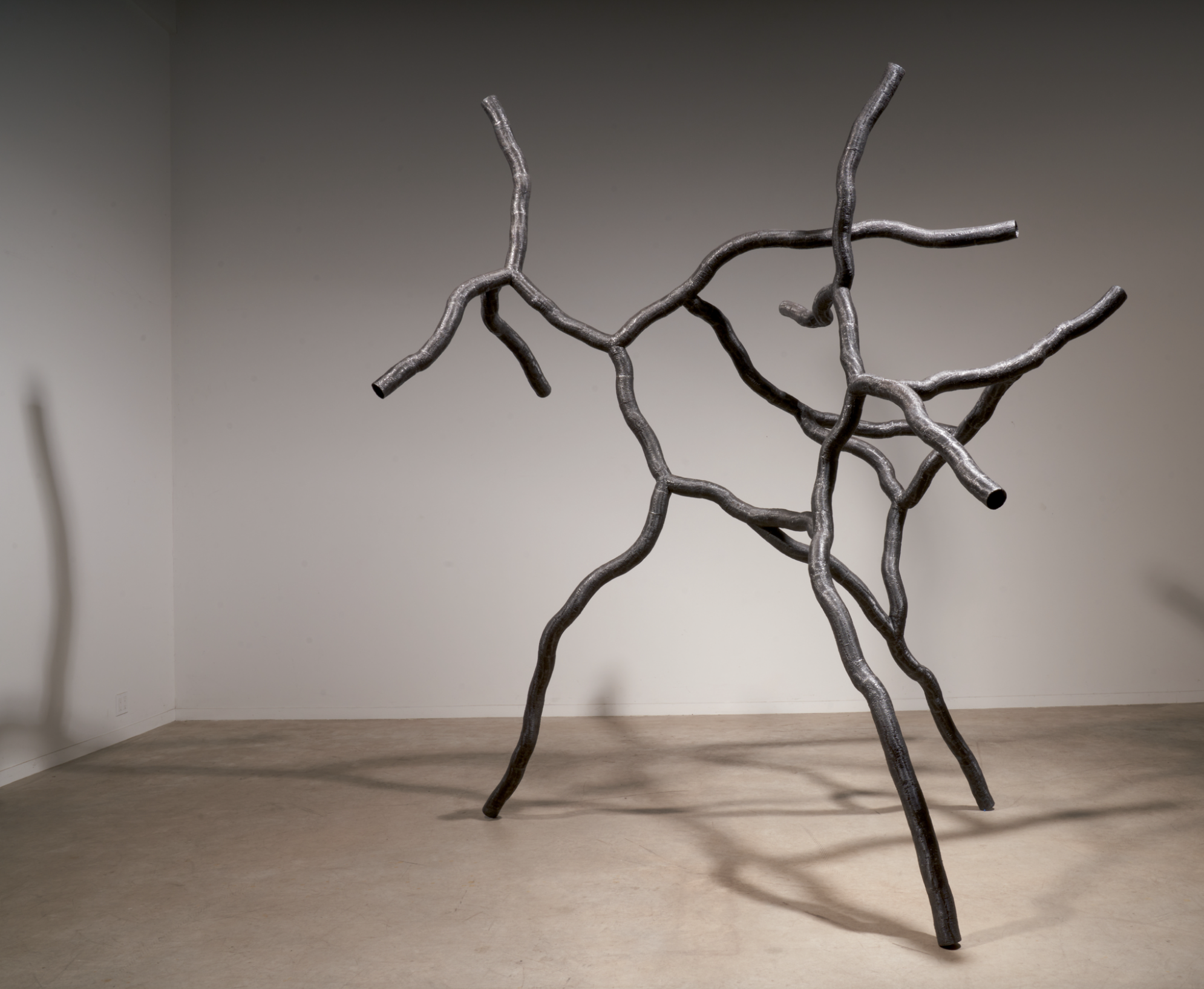
“At the end of World War II, there were no forests in Korea because so many trees had been cut down by the Japanese and Koreans to build and for everyday tasks. Each time I go back to Korea it is strange to see the trees and hills in the mountains. Now there is a commitment to planting as many trees as possible.”
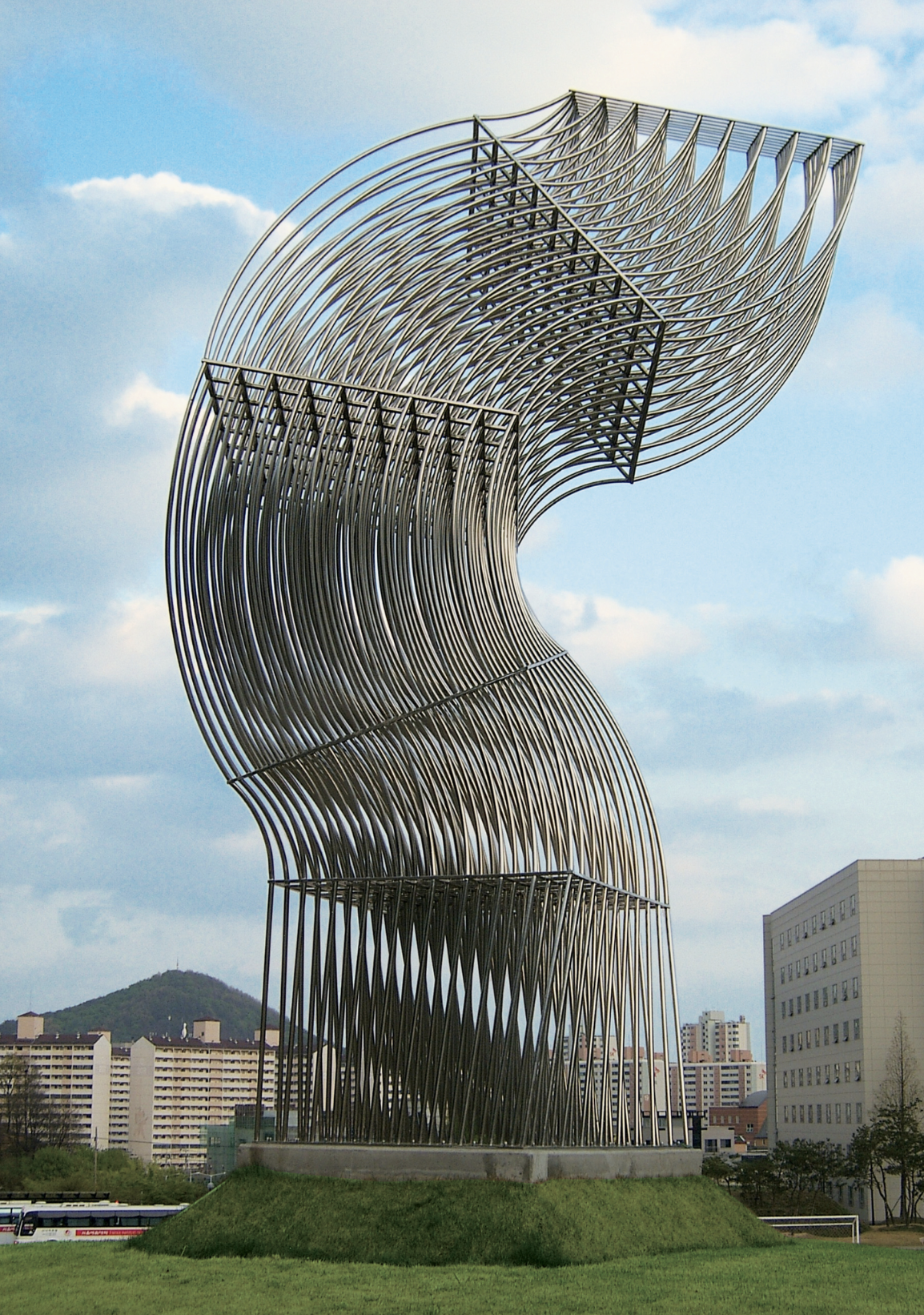
“This piece was inspired by my childhood memories of evening skies in Ilsan, Korea, lying on my grandmother’s lap and listening to stories as the stars engaged in conversation in the sky.”
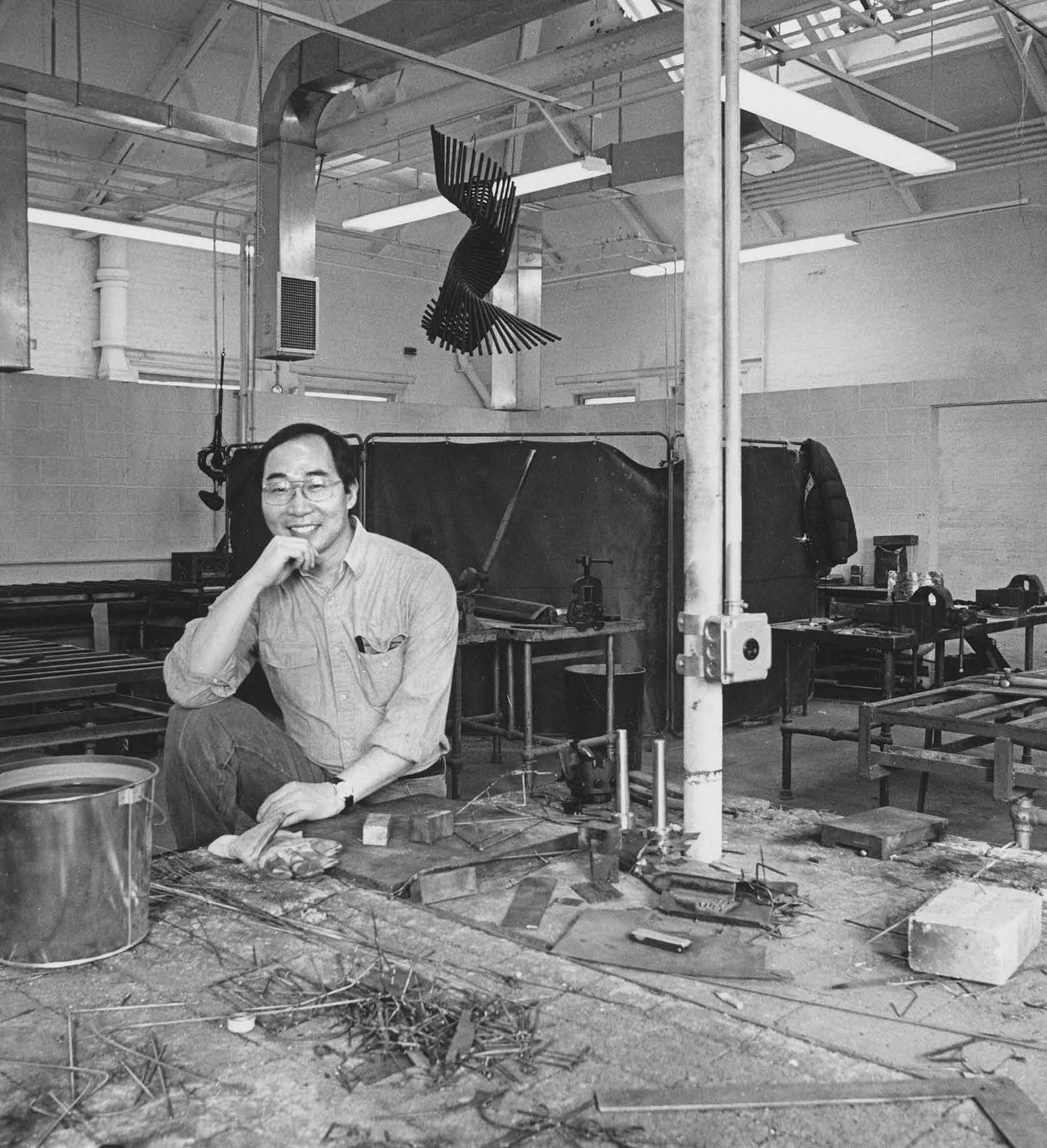
“I was asked recently to write about my years at Pratt as a student and later as a member of the faculty and administration. I didn’t have to search my memory very hard before I began to hear the buoyant notes from Antonín Dvořák’s Ninth Symphony, “from the New World.” . . . Each time I hear his New World Symphony, it feels as if a huge curtain is drawing open onto an infinitely immense new world. Pratt always had this effect on me. The world opened to me like a new dawn.”